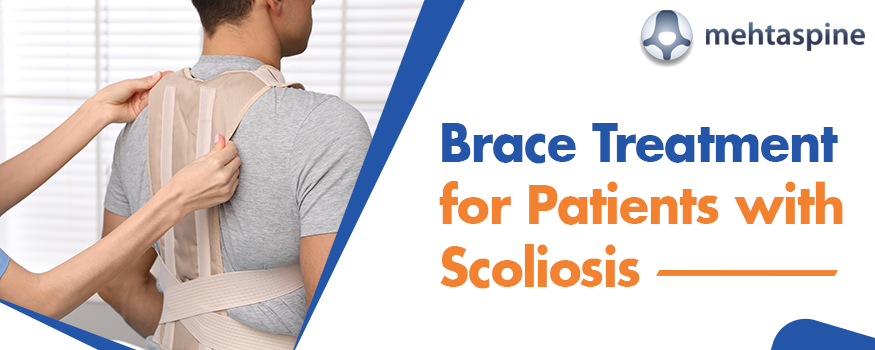Brace Treatment for Patients with Scoliosis
Scoliosis, a curvature of the spine, can be a challenging condition for those affected. While the severity varies, many individuals find themselves seeking effective treatments to prevent further progression and alleviate discomfort. One such treatment that has been gaining attention is brace therapy.
In this blog post, we will explore the significance of brace treatment for patients with scoliosis, shedding light on its benefits, the types of braces available, and the impact it can have on the lives of those grappling with this condition.
Understanding Scoliosis
Before delving into brace treatment, it’s crucial to grasp the nature of scoliosis. This musculoskeletal disorder manifests as an abnormal curvature of the spine, often resembling an “S” or a “C” shape. While some cases are mild and may not cause noticeable symptoms, others can lead to pain, discomfort, and affect respiratory function. Scoliosis typically emerges during adolescence.
The Role of Braces
Brace treatment, also known as orthotic intervention, is designed to halt the progression of scoliosis, prevent the curvature from worsening, and potentially reduce it over time. Braces are custom-fitted devices that exert gentle pressure on the spine, promoting alignment and stability. Your spinal disk problem specialist may advise you to use a brace based on factors such as the severity of the curvature, the individual’s age, and the likelihood of progression.
Types of Braces
- Boston Brace: This is a rigid, custom-molded brace that covers the torso and is worn under clothing. It is often prescribed for thoracic or lumbar curves.
- Milwaukee Brace: This brace is more complex, with additional components to address specific curvature patterns. It includes a neck ring and a pelvic section and is typically recommended for higher thoracic curves.
- TLSO (Thoraco-Lumbo-Sacral-Orthosis): A more modern and streamlined approach, the TLSO brace covers the thoracic, lumbar, and sacral regions. Its design allows for greater comfort and ease of movement.
Benefits of Brace Treatment
- Halt Progression: The primary objective of brace treatment is to prevent the curvature from worsening, especially during periods of growth.
- Pain Management: Braces can help alleviate pain and discomfort associated with scoliosis, improving the overall quality of life for patients.
- Avoiding Surgery: For many individuals, successful brace treatment can negate the need for surgical intervention, providing a non-invasive alternative.
- Psychological Support: Wearing a brace can offer psychological support by promoting a positive body image and reducing self-consciousness about the physical effects of scoliosis.
While scoliosis can present significant challenges, brace treatment stands as a beacon of hope for many individuals. Through its ability to halt progression, manage pain, and offer a non-invasive alternative to surgery, braces play a vital role in the comprehensive care of those affected by this condition. Braces can also be used to alleviate spinal fusion hardware failure symptoms.
Explore the transformative benefits of brace therapy and gain insights into effective spinal deformity corrections. For expert advice and personalized care, consult Mr Jwalant S Mehta, a distinguished Children and Adult Spinal Surgeon based in Birmingham. With a decade of experience, Mr. Mehta specializes in spinal deformity corrections and treats a wide range of spinal conditions. Your spine deserves the best—explore the possibilities with Mr Jwalant Mehta.


